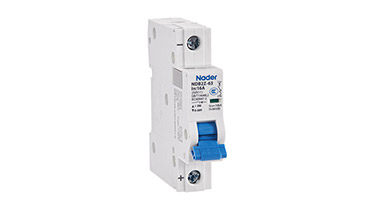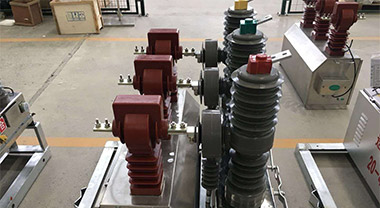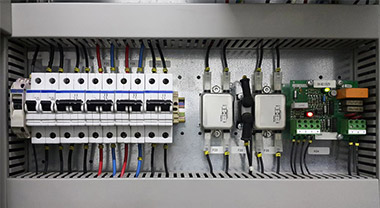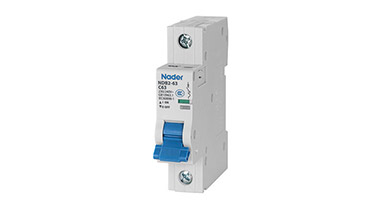What are the components of the circuit breaker?
What are the components of the circuit breaker? Mainly divided into internal accessories and external accessories.
Internal accessories
1. Auxiliary contact:
The contact mechanically linked with the main circuit opening and closing mechanism of the circuit breaker. It is mainly used to display the opening and closing status of the circuit breaker. It is connected to the control circuit of the circuit breaker through the opening and closing of the circuit breaker. Related electrical appliances are controlled or interlocked. For example, output signals to signal lights, relays, etc. Molded case circuit breaker frame rated current 100A is a single breakpoint switching contact, 225A and above is a bridge contact structure, and the agreed heating current is 3A; frame rated current 400A and above can be equipped with two normally open and two normal Closed, the agreed heating current is 6A. The number of operating performance is the same as the total number of operating performance of the circuit breaker.
2. Alarm contact:
The alarm contact used for circuit breaker accidents, and this contact will only act after the circuit breaker trips and breaks. It is mainly used to trip freely when the load of the circuit breaker has an overload, short circuit or undervoltage fault, and alarm The contact is converted from the original normally open position to the closed position, and the indicator lamp, electric bell, buzzer, etc. in the auxiliary circuit are connected to display or remind the fault trip state of the circuit breaker. Since the probability of the circuit breaker tripping freely due to load failure is not too much, the life of the alarm contact is 1/10 of the life of the circuit breaker. The working current of the alarm contact generally does not exceed 1A.
3. Shunt trip unit:
Shunt trip unit is a trip unit excited by a voltage source, and its voltage has nothing to do with the main circuit voltage. Shunt release is an accessory for remote control of opening. When the power supply voltage is equal to any voltage between 70% and 110% of the rated control power supply voltage, the circuit breaker can be opened reliably. The shunt release is a short-time work system, and the coil energization time generally cannot exceed 1S, otherwise the line will be burned. In order to prevent the coil from burning out, a micro switch is connected in series with the shunt trip coil for the molded case circuit breaker. When the shunt release is pulled in by the armature, the micro switch is converted from normally closed to normally open, due to the power supply of the shunt release The control circuit is cut off, even if the button is pressed artificially, the shunt coil will never be energized again, which avoids the coil burning. When the circuit breaker is closed again, the micro switch is in the normally closed position again.
4. Under-voltage release:
Under-voltage release is a type of release that causes the circuit breaker to open with or without delay when its terminal voltage drops to a certain range. When the power supply voltage drops (or even Decrease slowly) to within the range of 70% to 35% of the rated operating voltage, the under-voltage release should operate. When the power supply voltage is equal to 35% of the rated operating voltage of the release, the under-voltage release should It can prevent the circuit breaker from closing; when the power supply voltage is equal to or greater than 85% of the rated operating voltage of the under-voltage release, it should be able to ensure reliable closing of the circuit breaker under thermal conditions. Therefore, when a certain voltage drop occurs in the power supply voltage in the protected circuit, the circuit breaker can be automatically disconnected to cut off the power supply, so that the load appliances or electrical equipment below the circuit breaker are protected from undervoltage damage. When in use, the undervoltage release coil is connected to the power supply side of the circuit breaker, and the circuit breaker can be closed after the undervoltage release is energized.
External accessories
1. Electric operating mechanism:
This is an accessory used for remote automatic opening and closing of the circuit breaker. The electric operating mechanism has two types: a motor operating mechanism and an electromagnet operating mechanism. The motor operating mechanism is a molded case circuit breaker case. Frame rated current 400A and above circuit breakers, electromagnet operating mechanism is suitable for molded case circuit breaker frame rated current 225A and below circuit breakers, whether it is an electromagnet or a motor, their suction and rotation directions are the same, only The closing and opening are achieved by the position of the cam inside the electric operating mechanism. When the circuit breaker is operated by the electric mechanism, it should be able to ensure reliable closing of the circuit breaker at any voltage between 85% and 110% of the rated control voltage.
2. Rotating operating handle:
Suitable for molded case circuit breakers. The mechanism of rotating the operating handle is installed on the cover of the circuit breaker. The shaft of the handle is installed in its mechanism matching hole. The other end of the shaft passes through the door hole of the drawer cabinet. The handle is installed on the shaft head exposed on the door of the complete set, and the round or square seat of the handle is fixed on the door with screws. This installation enables the operator to turn the handle clockwise or counterclockwise outside the door. Ensure that the circuit breaker is closed or opened. At the same time, turning the handle can ensure that the cabinet door cannot be opened when the circuit breaker is closed; only when the turning handle is in the opening or buckling, the door of the switch board can be opened. In an emergency, when the circuit breaker is "closed" and the door needs to be opened, press the red release button on the side of the rotating handle seat.
3. Extended handle:
It is an external extended handle, which is directly installed on the handle of the circuit breaker. It is generally used on large-capacity circuit breakers of 600A and above for manual opening and closing operations.
4. Handle locking device:
A card is installed on the handle frame, the handle is punched and then locked with a padlock. Mainly used when the circuit breaker is closed. When working, do not allow other people to open the switch and cause a power outage, or when the circuit on the load side of the circuit breaker needs to be repaired or is not allowed to be energized, to prevent the circuit breaker from being closed by mistake.




